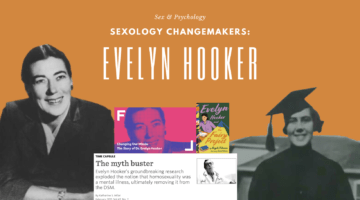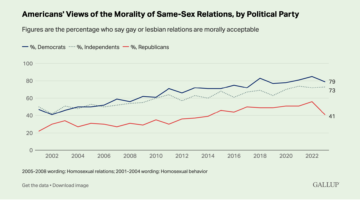Sex Question Friday: What Does a Gay Brain Look Like?
April 20, 2012 by Justin Lehmiller
Every Friday on the blog, I answer sex questions submitted to me by actual college students. This week’s question hits on a topic many people are curious about: the origin of homosexuality. Although we don’t know with certainty why variations in sexual orientation exist, there is growing evidence that biology is one of the biggest contributors. In this article, we will explore some of the science supporting this point.
Is a homosexual’s brain different from a heterosexual’s brain?
The answer appears to be yes. Over the past two decades, several studies have reported differences in brain size and structure between gay and heterosexual individuals. The earliest studies, conducted by Simon LeVay, found that certain portions of the hypothalamus (a brain structure involved in regulating several aspects of human behavior, including sexual activity) were larger in heterosexual men compared to gay men [1]. However, LeVay’s research was criticized on several grounds. Perhaps the biggest problem was that all of his research was done through post-mortem dissection, and when you’re studying dead patients, it’s not like you can ask them what their sexual orientation is. Thus, sexuality was “presumed” for the subjects based upon information in their medical records. As a result, it is difficult to draw firm conclusions from this research.
More recent studies have tried to build upon LeVay’s work by employing brain scanning technology on live patients with whom we can actually verify their sexuality. One recent study explored differences in the degree of symmetry between the left and right hemispheres of the brain, as well as the pattern of nerve fiber connections in the amygdala (a brain structure that is important in the processing of emotions) [2]. This study revealed that gay men’s brains were more similar in structure to heterosexual women than they were to heterosexual men. Likewise, lesbian’s brain structure was more similar to heterosexual men than it was to heterosexual women. Specifically, gay men and heterosexual women tended to have symmetrical brains (i.e., the two hemispheres were of approximately equal size), as well as more nerve connections in the left side of the amygdala; lesbians and heterosexual men tended to have asymmetrical brains (i.e., one side was larger than the other) and more nerve connections in the right side of amygdala.
Do these brain differences provide proof of the stereotype that gay men are inherently feminine and lesbians are inherently masculine? No. Although some amount of feminizing appears to occur in gay men’s brains and some amount of masculinizing appears to occur in lesbian’s brains, it is not the case that gay people are just like the other sex in all ways. For example, despite these brain differences, gay and heterosexual men actually have a lot in common when it comes to sexual behavior—both of them share a greater desire for multiple partners and casual sex than do women. Thus, while some differences in brain structure may exist across sexual orientations, it is wise not to over-interpret what they mean.
One final point worth mentioning is that it is unclear how social learning could account for these brain differences—they are most likely the result of genetics or prenatal hormone exposure. This research thus provides further evidence that biology seems to play a large role in determining our sexuality.
For previous editions of Sex Question Friday, click here. To send in a question for a future edition, click here.
Want to learn more about Sex and Psychology ? Click here for previous articles or follow the blog on Facebook (facebook.com/psychologyofsex), Twitter (@JustinLehmiller), or Reddit (reddit.com/r/psychologyofsex) to receive updates. You can also follow Dr. Lehmiller on YouTube and Instagram.
[1] LeVay S (1991). A difference in hypothalamic structure between homosexual and heterosexual men. Science, 253, 1034-1037. doi: 10.1126/science.1887219
[2] Savic, I., & Lindstrom, P. (2008). PET and MRI show differences in cerebral asymmetry and functional connectivity between homo- and heterosexual subjects. Proceedings of the National Academy of Sciences, 105, 9403-9408. doi: 10.1073/pnas.0801566105
Image Source: 123rf
You Might Also Like:

Dr. Justin Lehmiller
Founder & Owner of Sex and PsychologyDr. Justin Lehmiller is a social psychologist and Research Fellow at The Kinsey Institute. He runs the Sex and Psychology blog and podcast and is author of the popular book Tell Me What You Want. Dr. Lehmiller is an award-winning educator, and a prolific researcher who has published more than 50 academic works.
Read full bio >


